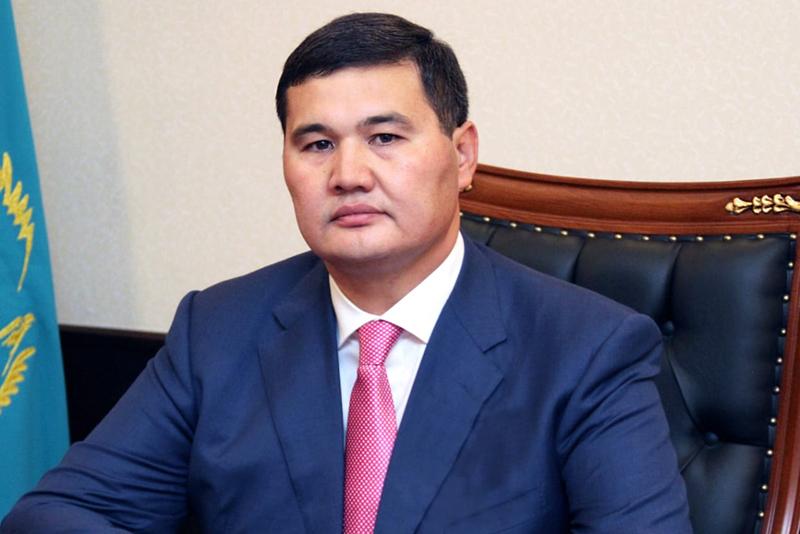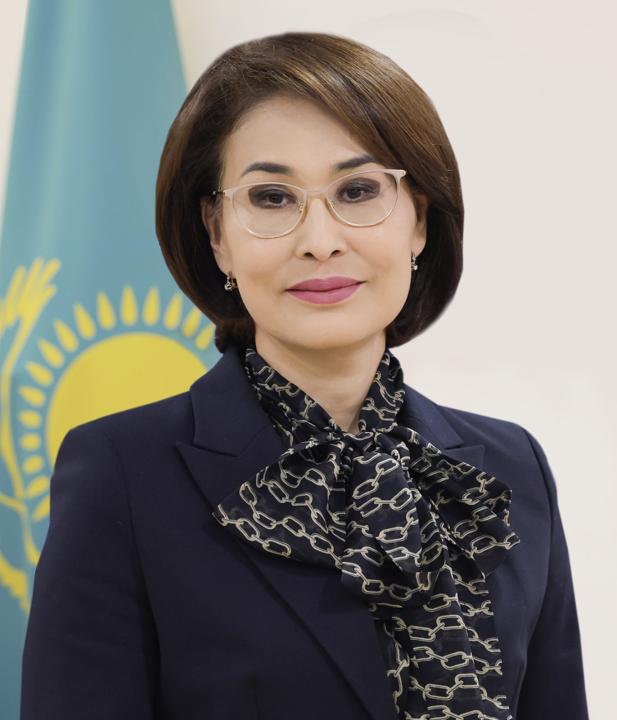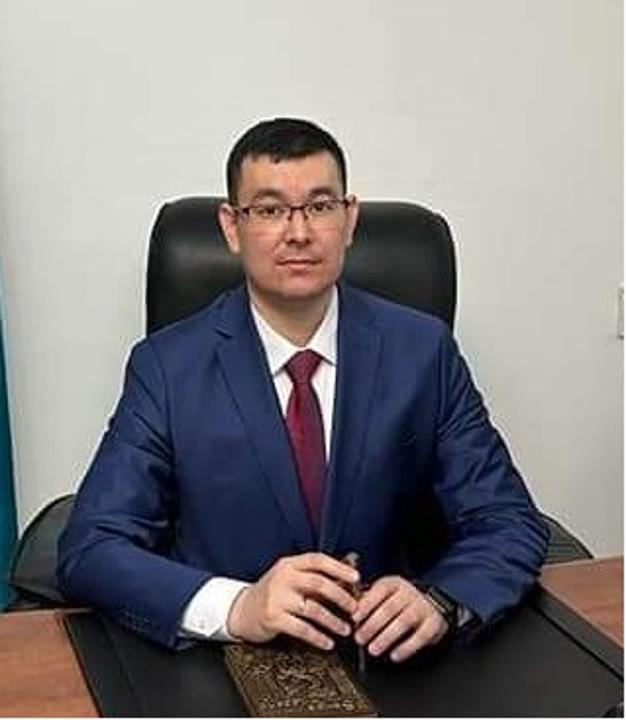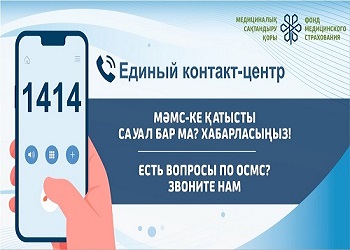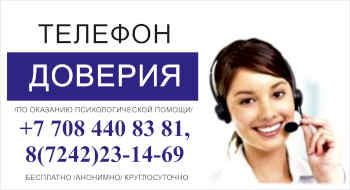DEPARTMENT OF REANIMATION-ANESTHESIOLOGY
Duysen Gabit Tleubergenovich
Department Head
The department of resuscitation-anesthesiology for the first time in the Kyzylorda region was opened on April 21, 1969 by order of the Minister of Health in the regional hospital for 6 beds. In August 1957, in the Kyzylorda region, the first anesthesiologist - resuscitator, specializing in the Institute for Advanced Education in Kiev, carried out the use of inhaled endotracheal anesthesia using chloroform + ether anesthesia with an anesthesia device Jordan (Krasnogvardeets). In 1964, P. a. anaesthesiologist-resuscitator Under the guidance of Nauryzbaev (intubation, masks, intravenous, cerebrospinal), the amount of anesthesia increased by 120 people. In 1967, new anesthesia machines (UNA), (UNAAP), and (HIRANA) were purchased at the hospital. In 1969, in connection with the opening of the intensive care unit - anesthesiology in Moscow, the qualified doctors Zhakipov B.K. and Nurumbetov S.K. resolved the following issues:
1. Expansion and introduction into production of types of anesthesiology anesthesiology anesthesiology anesthesiology anesthesiology patients.
2. Mastering new methods of anesthesia, specialization. (Neuroleptoanalgesia, ataralgesia, alcoholic, azeotropic, fluorotanic anesthesia)
3. Conducting lectures among medical workers on cardiopulmonary resuscitation, practical implementation.
Since 1970, the regional hospital has become a center of specialization, training of anesthetists - resuscitators of the region. In the period from 1972 to 1973, the first (RO-2), breathing apparatus (RO-3), (NARKON-P), (POLINARKON-2), (POLINARKON-2P) began to receive in the hospital. In 1986, 1 OKMT hyperbaric chamber was acquired, 2 doctors and several nurses specialized, and a wide range of improved medical care began for patients with carbon monoxide poisoning, in septic conditions, with damage to blood vessels and cerebral vessels. In 1975, the regional hospital organized a round-the-clock duty of resuscitation anesthetists, and an express laboratory was opened. The first doctor-organizer of the Express Laboratory A. Tanbaeva still works in the ranks. In order to improve intensive treatment in this area, research is being carried out on many new devices of the latest generation (ABL800 FLEX gas analyzer, A25 biochemical analyzer, Sysmex CA-50 Kaolagram analyzer 6 СX31 binocular microscope, Photometer 5010, Kokusan Н1200М hemotocrit apparatus).
Since 1985, they began to apply methods of extracorporeal detoxification, hemosorption, splenosorption, placentosorption, ultraviolet radiation therapy, blood lymphosorption, hemodialysis. Since the receipt in 1989 of the anti-burn (CLINITRON) bed, large-scale and improved support for anti-burn events has begun in the region. Since 1980, the introduction of regional anesthesia began to change widely, in 1990-2000 the number of regional anesthesia reached 100-120, and in 2011 - 900. In the period from 1991 to 2000, the number of anesthesia was 1300-1500, and in 2014 the number of anesthesia reached 5500. In 2011, in connection with the opening of a new regional medicine center with a grant from Japan, many anesthesia machines were purchased (AESTIVE-5 6 units, FAVIUS 1 unit, AESPIRE 7900 units) and Rafael breathing apparatus 6 units. In 2010, with the help of the center’s administration, the department acquired lung breathing apparatus (Savina-300, Karina) and are constantly working to provide qualified assistance to seriously ill patients. Since 2009, we increased the number of anesthetics using Sevofluran inhalation anesthetic in the field of anesthesia to 1200. The use of anesthetics put into operation in the field of regional pain management (Naropin, Bupavakain) reached 1300. Due to the strengthening of the work of the intensive care unit of Mr. Tabynbaev N. B. and the opening of the cardiac surgery center, the intensive care unit was allocated into 3 areas. Resuscitation No. 1 (Department of Anesthesiology and Resuscitation), Resuscitation No. 2 (Department of Neuro - Stroke), Cardiorenimation. Resuscitation No. 1 employs 15 doctors. Of these, 5 are doctors of the highest category, 4 are doctors of the 1st category, 3 are doctors of the 2nd category. 12% of hospitalized patients receive intensive treatment in the intensive care unit. In operating rooms, the number of anesthesia machines is 12, Frimus infiniti -3. Favius Plus - 3. Aestiva - 5. Leon - 1 department is fully equipped with cardiomonitors, electrical connectors, defibrillators, as well as other medical equipment.
Doctors of the department annually participate in international seminars and symposiums with the aim of improving knowledge and production activities in the field of anesthesiology and intensive care (thrombolysis therapy for acute cerebrovascular accident; detoxification therapy-hemosorption, hemodialysis, plasmapheresis; the use of 7.2% sodium chloride solution in dehydration therapy with severe brain injuries, the use of a neurostimulator apparatus to block nerve fibers). In the republican medical scientific journals 20 articles of doctors were published, achievements in the department were published.
The goals set by the unit on the eve of the 20th anniversary of independence:
- widespread development in the field of anesthesiology, the development and implementation of the latest model of anesthesia devices,
- the study of international standard treatment methods in the field of intensive care and the introduction of advanced medical care methods in production.
- Assistance in ensuring the work of the Express Laboratory with equipment and devices of the latest generation, improving the quality of intensive treatment




